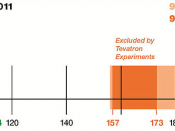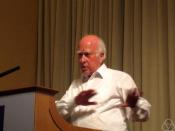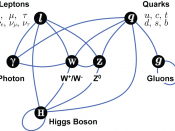Higgs Boson is a subatomic particle scientist think that it's the source of the mass of all other particles that have mass. Mass is the property of an object related to its weight. The Higgs boson is named for Scottish physicist Peter Higgs, who proposed a theory in 1964 suggesting that such a particle exists.
Higgs developed his theory to explain a surprising discovery about the forces that act between subatomic particles. Physicists had known that these forces have certain mathematical properties called symmetries. Some theories say that the symmetries apply only to particles that have no mass. But experiments showed that the symmetries also apply to particles with mass. Higgs said that what became known as the Higgs boson contributes mass to the other particles. Those particles retain the relationship to the symmetries characteristic of massless particles.
The Higgs boson, if it exists, has a large mass for a subatomic particle.
Estimates range from about 400 to 1,000 times the mass of a proton. One of the most powerful of the research machines called particle accelerators may soon create observable numbers of Higgs bosons.





